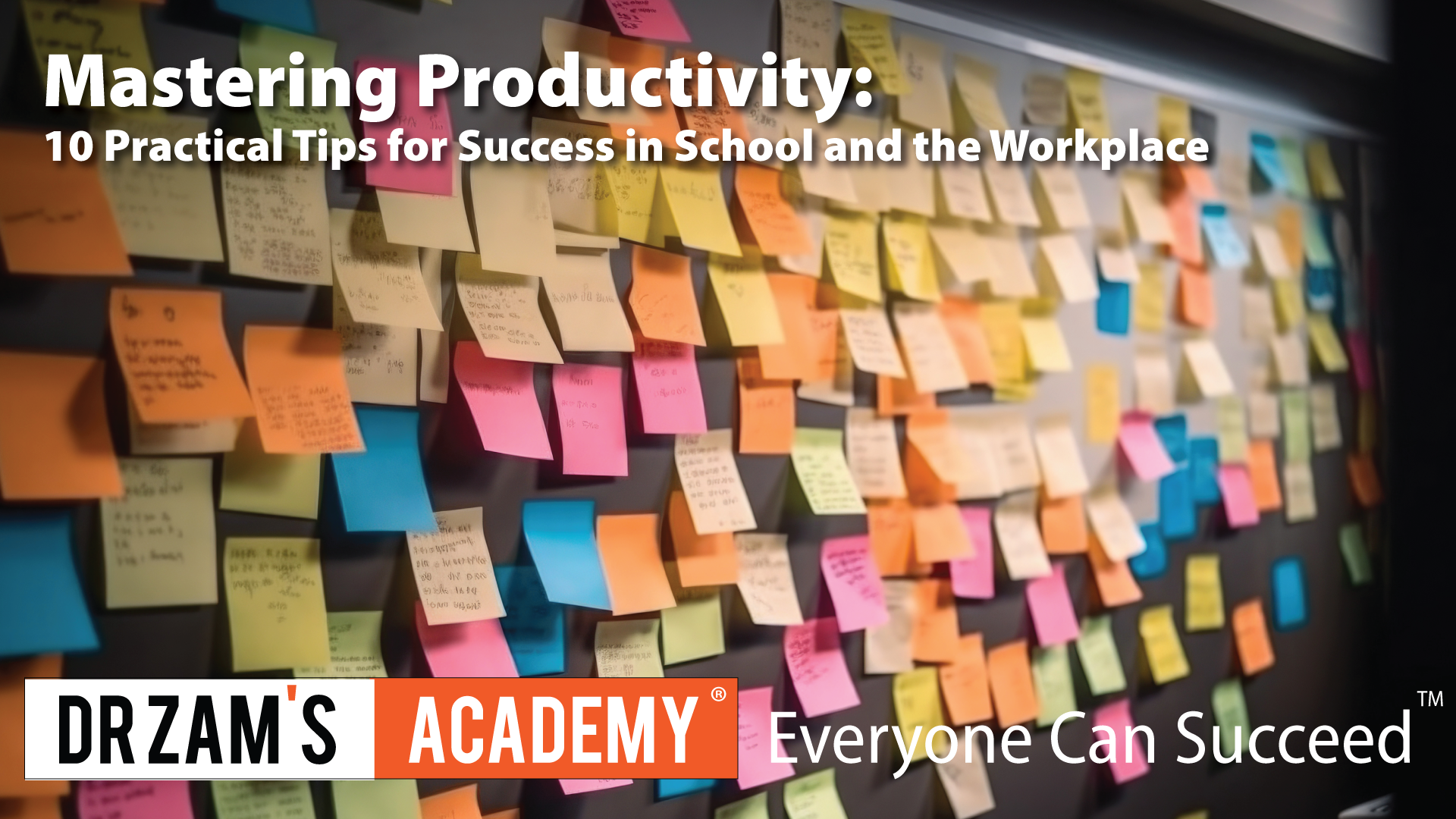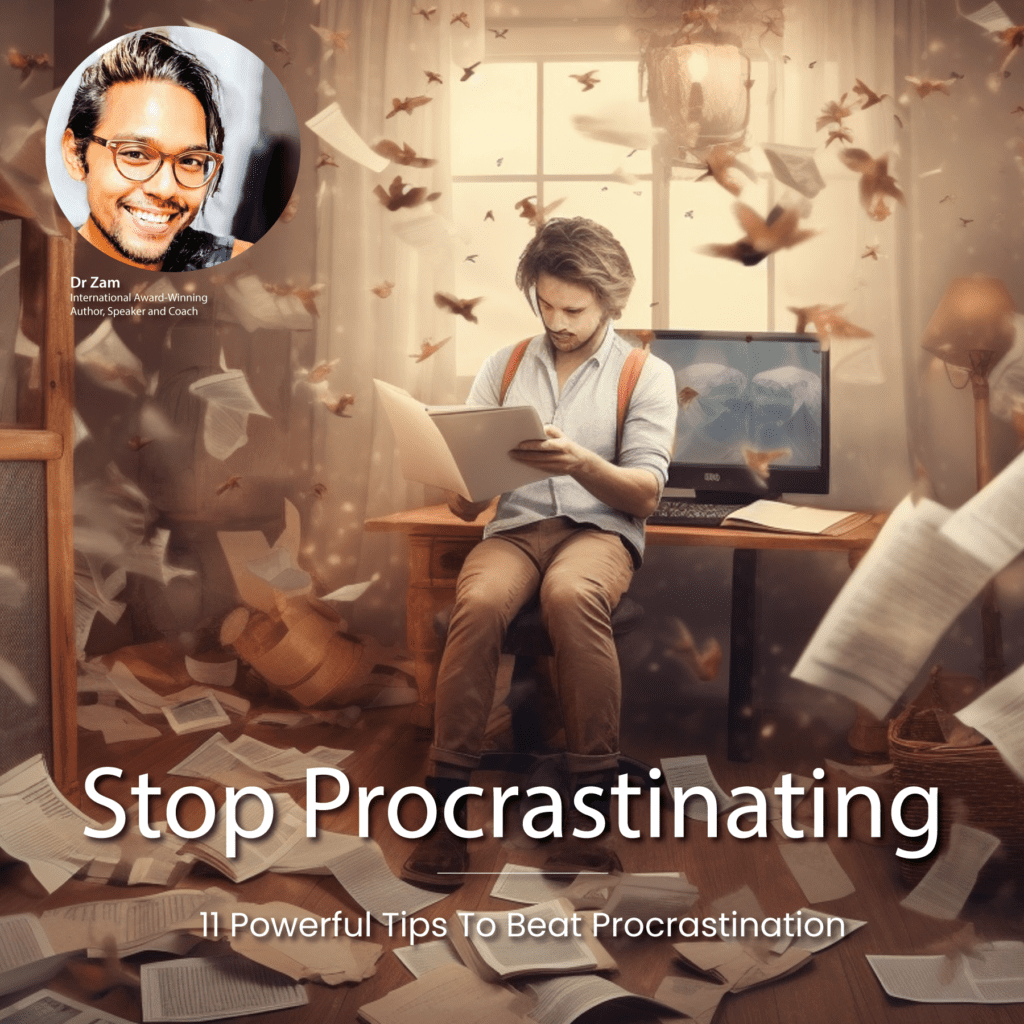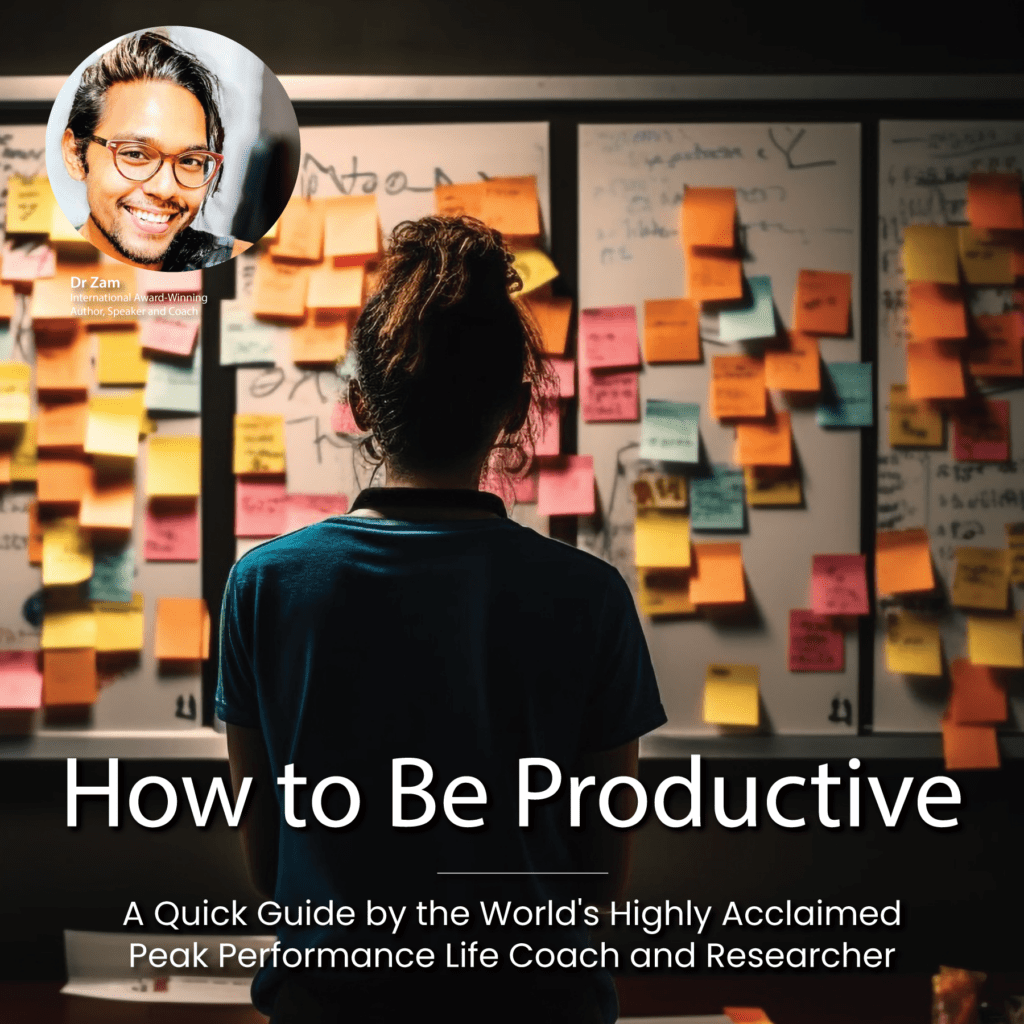
Most people seek ways to enhance their daily performance and achieve a greater sense of well-being. Understanding the science of productivity can significantly impact your efficiency, focus, and overall satisfaction in life. By applying psychological principles and neuroscientific findings, you can identify strategies that optimize your workflow, reduce stress, and promote a healthier work-life balance. This blog post will explore into actionable insights that empower you to harness your potential and elevate your daily achievements.
Understanding Productivity
The concept of productivity is often viewed as a straightforward measure of efficiency, but its true nature is far more complex. It involves not only the quantity of work you complete but also the quality and effectiveness of that work. This means that to truly enhance your productivity, you must consider how you manage your time, your energy, and your environment. Your ability to focus and prioritize plays a key role in determining how productive you can be on any given day, influencing not just your performance at work, but also your overall well-being.
The Science Behind Productivity
Against a backdrop of constant distractions and demands, the science of productivity offers valuable insights into what drives your performance. Research has shown that factors such as motivation, mental state, and even physical health can significantly impact your productivity levels. Neuroscience illustrates how your brain functions with regards to focus and attention, shedding light on how to create an environment conducive to enhanced performance. Understanding these principles equips you with tools and strategies to maximize your day-to-day efforts, enabling you to work smarter rather than harder.
Common Myths About Productivity
Along your journey to becoming more productive, it’s crucial to be aware of the common myths that can hinder your progress. Many people believe that multitasking is an effective way to get more done in less time, yet research indicates that it often leads to reduced efficiency and increased errors. Similarly, some assume that long hours equate to higher productivity, when in reality, sustained working hours can lead to burnout and diminished performance. By debunking these myths, you can empower yourself to adopt a more effective and sustainable approach to productivity.
Plus, understanding that productivity isn’t just about doing more, but about focusing on the right tasks, can shift your perspective significantly. Instead of aiming to complete an endless to-do list, prioritize activities that align with your goals and values. Emphasizing quality over quantity can lead to more meaningful accomplishments, enhancing both your daily performance and overall well-being in the long run.
The Link Between Productivity and Well-Being
One of the most significant aspects of improving your productivity is its direct correlation with your overall well-being. When you accomplish your tasks and manage your time effectively, you experience less stress and anxiety, which allows for a more balanced life. The satisfaction derived from meeting your goals enhances your mood and can create a sense of purpose, leading to a more fulfilling day-to-day existence. In turn, when you prioritize your productivity, you are also investing in your mental health, fostering resilience against potential burnout and fatigue.
Mental Health Benefits
Above all, enhanced productivity can lead to remarkable mental health benefits. When you structure your day effectively and achieve your goals, you cultivate a sense of accomplishment. This feeling can counteract feelings of overwhelm and give you a positive outlook on your capabilities. Studies have shown that individuals who manage their time well tend to experience lower levels of anxiety and depression, providing them with a mental boost that can ripple through all aspects of their lives. Furthermore, improved productivity contributes to better decision-making and problem-solving skills, as you become more adept at managing distractions and challenges.
Physical Health Benefits
Among the physical health benefits associated with heightened productivity is the fact that a well-structured routine can lead to healthier lifestyle choices. When you are productive, you tend to allocate time more efficiently, including time for exercise and proper meal planning. This structured approach encourages regular physical activity, which is vital in maintaining cardiovascular health, boosting your immune system, and reducing chronic inflammation. Additionally, achieving your daily tasks reduces the likelihood of stress-related physical ailments, such as headaches, digestive issues, and fatigue.
Indeed, the interplay between productivity and physical health cannot be overlooked. When you manage your time wisely, you set aside vital moments for movement and self-care, which can lead to noticeable improvements in your energy levels and overall vitality. Furthermore, as you see positive changes in your physical health, it can further motivate you to stay productive, creating a virtuous cycle that supports your well-being on multiple levels. As you continue to cultivate productive habits, you’ll find yourself not only performing better but also feeling more energized and alive.
Strategies to Enhance Daily Performance
You might often find yourself overwhelmed with tasks and responsibilities that can hinder your productivity. Implementing effective strategies to streamline your daily performance can transform your routine into a more organized and fulfilling experience. By leveraging techniques in time management and mindfulness, you can maximize your output while enhancing your overall well-being.
Time Management Techniques
Techniques such as the Pomodoro Technique, prioritization, and time blocking can significantly elevate your productivity levels. The Pomodoro Technique involves breaking your work into intervals, typically 25 minutes, followed by short breaks. This method helps maintain your focus and prevents fatigue. Additionally, employing the Eisenhower Matrix to prioritize your tasks allows you to distinguish between what is urgent and important, ensuring that your efforts are directed towards the most impactful activities each day. Time blocking further enhances this by allocating specific periods for dedicated tasks, reducing distractions and improving your workflow.
The Role of Mindfulness
After incorporating effective time management practices, consider integrating mindfulness into your daily routine to elevate your performance even further. Mindfulness fosters a greater sense of awareness and presence, enabling you to engage fully with your work and minimize distractions. By taking a few moments each day to practice mindfulness—whether through meditation, breathing exercises, or simply pausing to absorb your surroundings—you can enhance your ability to concentrate and improve overall mental clarity.
Due to the nature of modern life, which is often marked by constant distractions and a fast-paced rhythm, cultivating a mindful approach can help you navigate challenges with greater ease. By being attuned to your thoughts and emotions, you can better manage stress and make more deliberate choices regarding your time and energy. This alignment enhances not only your productivity but also contributes to a healthier and more balanced lifestyle.

Leveraging Technology for Better Productivity
Your daily productivity can significantly improve by harnessing the right technological tools and applications. Modern tools transform the way you manage your time and tasks, streamlining processes that would have previously consumed much of your day. By utilizing specific productivity apps, you can prioritize your responsibilities better, set reminders, and even collaborate with others seamlessly. These innovations can help you construct a more organized workflow, allowing you to focus on what truly matters without getting lost in the shuffle of daily distractions.
Tools and Apps
An effective way to enhance your productivity is by leveraging apps designed for specific tasks, such as project management, note-taking, or habit tracking. For instance, project management tools like Trello or Asana allow you to visualize your workload, keeping your tasks organized and manageable. Similarly, time management apps can help you assess how you spend your time and identify areas where you can make improvements. When you integrate these tools into your daily routine, you allow for greater focus, which can lead to increased efficiency and performance.
Digital Distractions and How to Avoid Them
Leveraging technology effectively also means understanding the potential distractions that come with it. Notifications from social media, emails, and other apps can interrupt your focus and lead to decreased productivity. To combat these interruptions, consider setting specific times to check messages or social media rather than allowing them to dictate your attention throughout the day. Additionally, utilizing features like “Do Not Disturb” or app blockers can create a more conducive environment for deep work, allowing you to complete tasks without unnecessary interruptions.
Avoid letting digital distractions derail your productivity by implementing practical strategies that promote focus. This might include having designated tech-free periods during your day, where you turn off notifications and take a break from screens. Curating your digital environment by limiting the number of open tabs or apps on your devices can also help you concentrate better. By taking control over your digital landscape, you can create an atmosphere that fosters productivity and enhances your overall well-being.
Developing Productive Habits
Now that you understand the importance of productivity, it’s time to focus on developing habits that will enhance your daily performance and overall well-being. Habits are vitally the building blocks of how you structure your day. By embedding productive routines into your life, you create an environment where you can thrive. This process begins with setting clear, achievable goals that guide your actions and keep you motivated.
Setting Clear Goals
Between the myriad of tasks you face daily, having clear goals gives you a roadmap tailored to your aspirations. Without well-defined objectives, it’s easy to become lost in the multitude of activities that fill your schedule. Whether it’s personal growth, career advancements, or wellness targets, pinpointing what you want to achieve allows you to channel your energy effectively. Approach goal setting using the SMART criteria—specific, measurable, achievable, relevant, and time-bound—to ensure that you are not only aiming for success but also setting yourself up for it.
Creating a Consistent Routine
Any effective habit formation relies on consistency, which you can achieve by establishing a routine that aligns with your goals. A well-structured daily agenda helps you prioritize tasks, manage your time more efficiently, and reduce decision fatigue. When your body and mind become accustomed to specific actions at certain times, you can operate with greater ease and focus. For example, you might set aside time each morning for planning your day, which can set a positive tone and build momentum.
Understanding how creating a consistent routine benefits your productivity also encompasses recognizing its psychological impact. By establishing habits that reinforce your objectives—such as exercise, reading, or even dedicated work slots—you create intuitive cues for your brain. This not only aids in eliminating distractions but also fosters a sense of accomplishment as you check items off your to-do list. As your routine solidifies, you’ll find that it becomes second nature, allowing you to navigate your day with increased confidence and efficiency.
Measuring Productivity and Growth
Keep in mind that measuring productivity goes beyond just tracking hours worked or tasks completed. It requires identifying specific metrics that align with your goals and values. By focusing on key performance indicators (KPIs) relevant to your role or personal projects, you can gain valuable insights into your productivity levels. This could involve analyzing the time spent on different tasks, the quality of your output, or even your ability to meet deadlines. When you standardize your metrics, you provide yourself with a clearer picture of what efficiency looks like in your daily routine.
Metrics for Performance
Measuring the right metrics can empower you to make informed decisions about your workflow. Start by determining which aspects of your performance are most important to you—be it speed, accuracy, or engagement. Utilizing tools such as time tracking software or progress journals can help you monitor your daily activities and reveal patterns in your behavior. Once you gather this data, you can analyze it to identify areas for improvement, enabling you to cultivate a more productive environment tailored to your needs.
Reflecting on Progress
To foster growth, regular reflection on your progress is crucial. By taking the time to review your achievements and setbacks, you can better understand the factors that contribute to your productivity. This reflection can take many forms, such as weekly reviews or monthly assessments where you evaluate your metrics and set new objectives. Engaging in this practice helps you stay aligned with your goals while also providing an opportunity to reassess your strategies for effectiveness.
With a dedicated approach to reflecting on your progress, you pave the way for continuous improvement in your productivity. This habit encourages you to adjust your methods and explore new techniques that might work more effectively for you. Over time, you’ll find that this reflective process not only enhances your daily performance but also uplifts your overall well-being, allowing you to achieve a balance between work and life.
Conclusion
Hence, leveraging the science of productivity can profoundly enhance your daily performance and overall well-being. By understanding how different strategies, such as time management techniques and habit formation principles, can affect your output, you can create an environment that fosters growth and efficiency. Implementing practices like the Pomodoro Technique or the Two-Minute Rule can lead to more focused work sessions and a greater sense of accomplishment, making your day increasingly rewarding. Additionally, prioritizing tasks and setting achievable goals can help you maintain motivation and clarity, reducing the feelings of overwhelm that often accompany busy lifestyles.
As you continue to explore these concepts, you will likely find that small adjustments to your routines can yield significant results. Embracing a growth mindset and being open to experimentation allows you to discover what works best for you. This adaptability will not only boost your productivity but also enhance your mental and emotional well-being. By investing time in refining your approach, you pave the way for a more satisfying and effective daily experience, ultimately leading to a more balanced and fulfilling life.
Q: What are some effective productivity techniques based on scientific research that can enhance my daily performance?
A: There are several productivity techniques backed by scientific research that can significantly improve your daily performance. One effective method is the Pomodoro Technique, which involves working in focused bursts of 25 minutes followed by short breaks. This approach helps maintain high levels of concentration and reduces mental fatigue. Another strategy is the Eisenhower Matrix, which helps in prioritizing tasks based on urgency and importance, allowing you to focus on what truly matters. Additionally, setting specific, achievable goals using the SMART criteria (Specific, Measurable, Achievable, Relevant, Time-bound) can guide your daily activities and lead to a sense of accomplishment.
Q: How does understanding my circadian rhythm improve my productivity and well-being?
A: Understanding your circadian rhythm, which is your body’s natural 24-hour cycle, can have a significant impact on productivity and well-being. Scientific studies reveal that aligning your work schedule with your natural energy peaks (usually in the morning or early afternoon for many individuals) can enhance focus and efficiency. For instance, tasks that require deep concentration or creativity may be best tackled during your peak hours, while administrative or routine tasks can be scheduled for less productive times. Additionally, being mindful of your sleep hygiene and ensuring you get adequate rest can boost your energy levels and cognitive function throughout the day.
Q: In what ways can mindfulness practices contribute to better productivity and overall wellness?
A: Mindfulness practices, such as meditation and deep-breathing exercises, have been shown to improve productivity and enhance overall wellness. Research indicates that regular mindfulness meditation can lead to increased focus, reduced stress, and heightened emotional regulation, allowing individuals to manage distractions more effectively. By practicing mindfulness, you develop a greater awareness of your thoughts and feelings, enabling you to make more intentional decisions rather than reacting impulsively. Incorporating mindfulness breaks into your daily routine can help refresh your mind, leading to improved creative thinking and decision-making capabilities, ultimately contributing to higher productivity levels.















